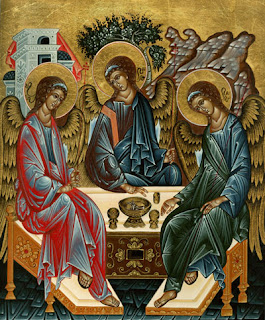What was said to the rose that made it open
was said to me here in my chest.
What was told the cypress
that made it strong and straight,
what was whispered the jasmine
so it is what it is,
whatever made sugarcane sweet,
whatever was said to the inhabitants
of the town of Chigil in Turkestan
that makes them so handsome,
whatever lets the pomegranate flower
blush like a human face,
that is being said to me now. I blush.
Whatever put eloquence in language,
that's happening here.
The great warehouse doors open,
and I fill with gratitude,
chewing a piece of sugarcane,
in love with the one
to whom every that belongs.
Rumi
The essence of that which makes sugarcane sweet and roses bloom, the whispered fragrance of jasmine and the strong steadfastness of the cypress, that is what speaks to us beyond the physical and beckons us to an intimacy of unbounded being. It is the spirit of the universe that fills these with that which they are, not what they look like, but their purest, most authentic nature. Essence. Spirit.
The same day I read this poem I received Eckhart Tolle’s meditation: “Each human needs to find his or her timeless and formless essence identity.”
Here are some definitions of the word essence:
–noun
1. the basic, real, and invariable nature of a thing
2. a substance obtained (concentrated) from a plant, drug, or the like, by distillation, infusion, etc., an alcoholic solution of an essential oil; spirit.
3. perfume; scent.
4. Philosophy . the inward nature, true substance, or constitution of anything
5. something that exists, esp. a spiritual or immaterial entity.
Acts 17:24-27 “The God who made the world and everything in it is the Lord of heaven and earth and does not live in temples built by human hands. And God is not served by human hands, as if God needed anything. Rather, the Spirit of God gives everyone life and breath and everything else. From one human God made all the nations, that they should inhabit the whole earth. God did this so that they would seek and perhaps reach out and find God, though the Spirit of God is not far from any one of us. ‘For in God we live and move and have our being.’
All of creation, formed in the image of God, is the triune nature of Divine manifestation. Source, spirit, and fragile, transient form in a dynamic relationship of perichoresis(a). In John 1, the Word became flesh (Greek: Sarx) meaning form, fragile, finite, passing, temporary. God the source breathes into our finite, fragile form the essence of life, which is all that is perfect and lovely, the Spirit of God’s self.
2 Cor 2:14. “Thanks be to God, who leads us in Christ’s triumphal procession and uses us to spread the aroma of the knowledge of him everywhere. For we are to God the fragrance of Christ.”
The sweet taste of sugar cane, the whisper of jasmine, the beautiful vulnerability of the human heart, it is the deep, true nature of these that pierces our soul with the recognition that we are also the fragrance, that flavor, that beauty. It is life in its purest form,the truth of being that unites us with eternal truth. It is what we appreciate in Jesus, the reflection of our human self: authentic, fragile and “beautiful beyond description, too marvelous for words.”
In his poem, Ode on a Grecian Urn, John Keats speaks of the timeless truth, the essence that lies hidden in fragile form. The urn informs those observing it, who cannot understand the fleeting nature of form and the eternal timelessness of essence:
"Beauty is truth, truth beauty," – that is all
Ye know on earth, and all ye need to know.
Form is simply the physical vessel of the divine truth that is God. When we can "see" truth we are captured by the most beautiful vision one can behold, it is the essence of who we are. Peggy November 2010
(a) Perichoresis: The doctrine of the Trinity. The word is derived from the Greek “peri-choresis” which translates as, “peri” meaning around, “choresis” meaning to dance (the same root as choreography). The relationship between the Persons of the Trinity was described, by early Christians, as an eternal Holy Dance of each Person in the Trinity around and within the Others.
© Peggy Beatty 2010

















